Meet the daredevil stunt performers helping Europe’s film-making industry reach new extremes
As Spain bolsters its reputation as Europe’s top film-making hub, an academy near Barcelona is training the next generation of stunt talent in delivering on-screen action.
The driver and her passenger stare ahead as the red Jeep begins to flood. Suddenly the nose of the car dips and the cabin fills up with water. As the vehicle sinks, someone shouts, “Action!” The driver whips into a frenzy, banging on the windows and shaking the steering wheel. She struggles with the door before finally forcing it open. Once outside the Jeep, she swims past the windscreen and frees the passenger. The women rise to the water’s surface.
Monocle watches all of this from a special window at the side of the pool. When the hair-raising sequence ends we exhale and applaud the two students who have just completed an important part of their course in underwater stunts. As the safety divers return to their standby positions, the overhead single-girder crane hoists the vehicle out of the pool to allow the next pair to practise their scene.
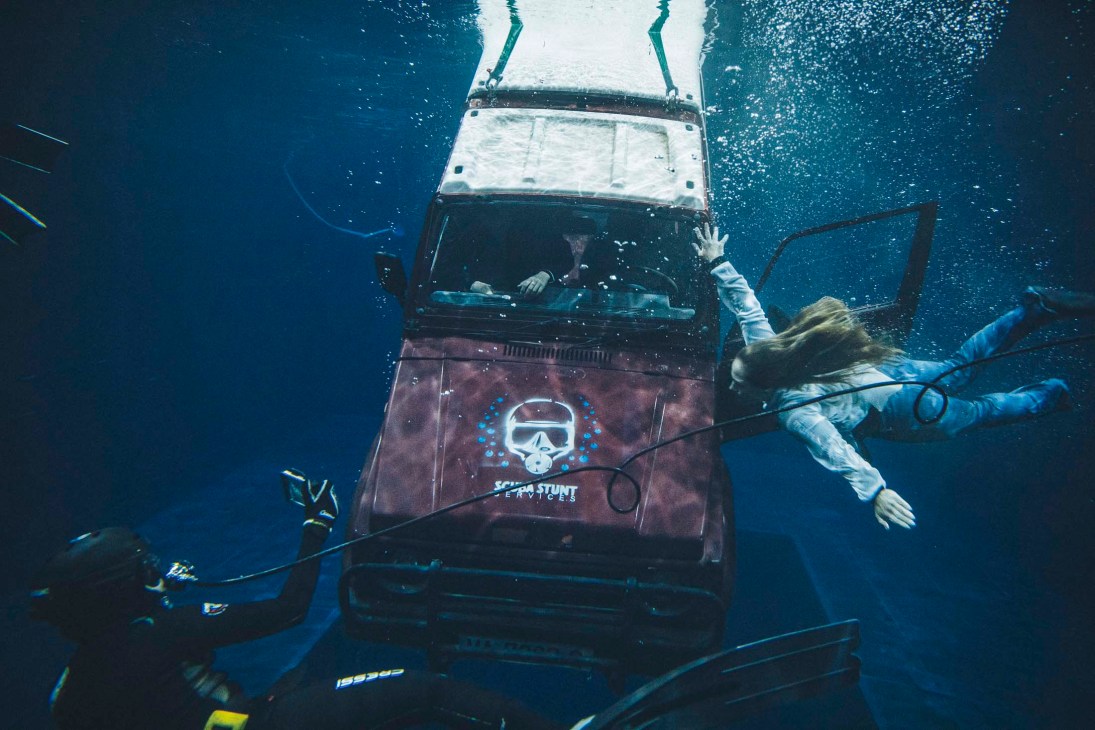
This is business as usual at the Water Tank, one of Spain’s largest aquatic soundstages. We are in a former warehouse on an industrial estate about 30 minutes by car from central Barcelona. The tank belongs to In Extremis Film Services, founded in 2011 as a special-effects company. The business has since expanded into the stunts sector through its educational programmes, talent agency and gym. It also runs two soundstages, including the Water Tank. In April, In Extremis launched a 3,200 sq m space called Amor Platónico (a play on plató, the Spanish word for “soundstage”), which was recently used to make an advert for Coca-Cola starring Spanish footballer Lamine Yamal.
The various strands of the business and its 70 employees are part of a cohort of dynamic enterprises that has brought plenty of investment into the area in recent years. In 2023, Spain ranked fifth worldwide for feature-film production; it was Europe’s top movie-making country for the third year running.
The central government has thrown its weight behind the sector with a plan known (somewhat clunkily) as “Spain Audiovisual Hub of Europe”, which in 2021 called for an investment of about €1.6bn in audio-visual production over the next four years. It has been a smart strategy: according to a study by the Spain Film Commission, for every euro that is provided as a fiscal incentive for international shoots, €9 are generated for the country’s economy.
The founder of In Extremis, Lluís Rivera, meets Monocle in the fantastical realm of the company’s special-effects workshop. We walk past missiles hanging from the lofty ceiling and a rain-making truck standing at the ready. We enter the facility’s testing floor just in time to find a team of specialists refining a pyrotechnic effect. A fire ignites and spreads nine metres across the floor, its flames rising to waist height. We are dazzled by the light and heat, as black smoke billows up into the powerful ventilation system. For Rivera, fires and explosions are quotidian.

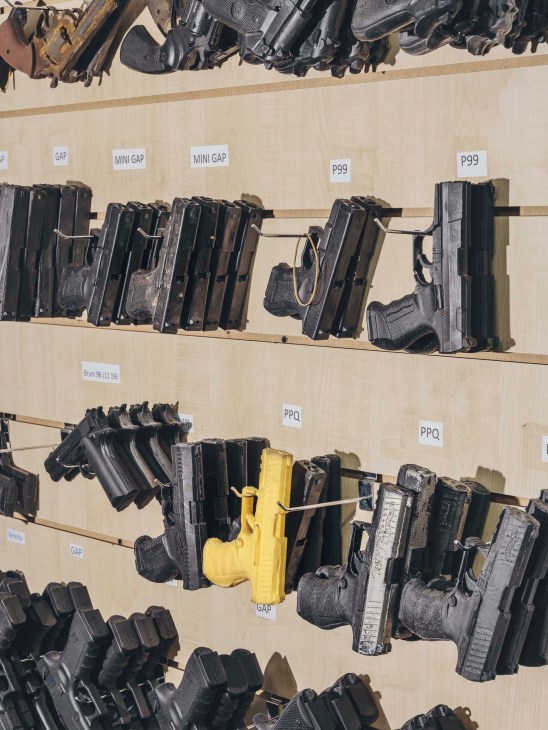
“I have been training for this all of my life,” he says. When Rivera was a child, his father, an industrial engineer who worked for Sony, would encourage him to construct mechanisms for winching his action figures in the family attic. During his experiments, Rivera would occasionally set fire to his Scalextric racetrack. As an adult, he developed an interest in sports such as rock climbing and motocross that would serve him well as he began to make a name for himself in the film industry. During one of his first on-set experiences as a special-effects supervisor, he performed some of the motorcycle stunts himself and tapped his network of daredevil acquaintances to perform the big falls, adding the title of stunt co-ordinator to his repertoire.
“From then on we have done something that doesn’t usually happen in other firms,” says Rivera. “We brought special-effects and stunt specialists under the same umbrella. If a scene calls for a guy to smash through a pane of glass, we’ll bring the guy and the breakaway glass.”
Despite the added efficiency of having a single company handling all of these moving parts, In Extremis spent more than 10 years as the only company in Spain offering both special effects and stunts. Today the former accounts for 70 per cent of the firm’s earnings, while the latter brings in the rest of its €4m annual revenue. In Extremis’s recent special-effects credits include work on a music video for pop star Dua Lipa, while the company co-ordinated stunts for Marlowe, Neil Jordan’s 2022 film-noir homage starring Liam Neeson and Jessica Lange.
Once the flames on the testing floor have been put out, the team readies a set of parachutes for its next project: a film about Álvaro Bultó, who pioneered the use of wingsuits in Spain. Stunt co-ordinator Oscar Dorta approaches with a stack of folded blue-and-yellow parachutes. Dorta’s skills as a stuntman with aerial expertise are unparalleled in the country. He has worked on 70 films and is currently transitioning to acting roles; he hopes to follow in the footsteps of those such as Jackie Chan, who turned from stuntman into movie star.
Dorta produces a photo of himself that shows him dangling from a helicopter during a shoot. It’s clear that he delights in the thrills of his work. He’s also proud of the role that In Extremis has played in reshaping the industry for the 100 or so professional stunt doubles working in Spain. “Since I began my career, the sector has evolved,” he says. “At In Extremis, we have influenced that change by making things official and starting a school with so many students. As the industry has grown, things have changed for the better.”
The Escac Stunt Academy – a collaboration between In Extremis and the Film and Audiovisual School of Catalonia – is the world’s only university-certified programme for stunt specialists. Opened in 2021, it has an average of 100 students per year. The two-year course teaches skills such as how to fall from great heights, combat with and without weapons, the use of firearms and underwater stunts. The campus is a 20-minute drive from In Extremis Club, the company’s state-of-the-art gym, where students, stunt professionals and members of the public train. It is outfitted with a parkour course, Olympic trampolines and air mattresses for aerial acrobatics.
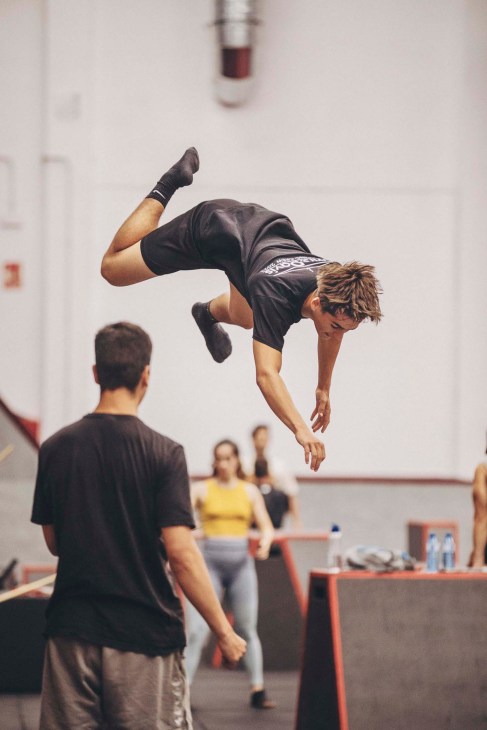
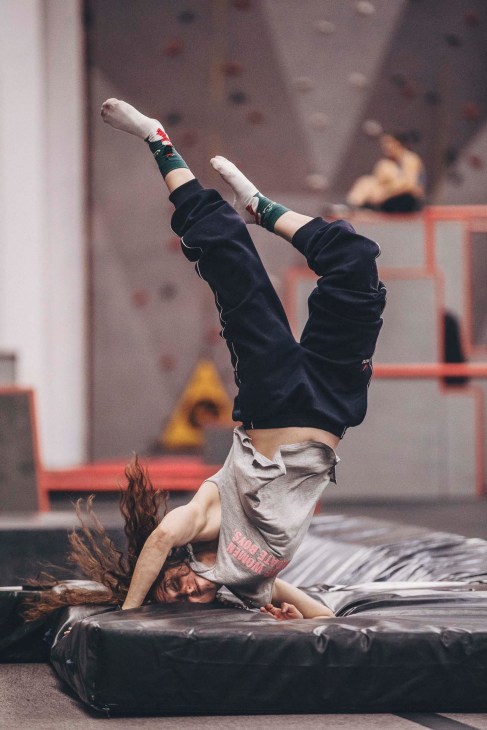

Aarón Vivar, the gym’s general manager and a former Spanish national parkour champion, guides Monocle through the club. “We designed this space ourselves and built it with our own hands,” says Vivar of the two years that it took to create the training space, complete with a climbing wall, a weights room and a boxing gym. “I know the types of jumps that are required and what stunt specialists need to practise. I wanted to address those needs.”
The gym’s tallest platform is seven metres high. It’s where we join Ivy Björg, a student from Iceland, as she practises a challenging move. Björg sets up for a “face off”, in which she launches herself from the platform while facing the quickly approaching ground – an ideal position for the camera to capture her expression. A moment before impact, she flips herself over so that her back presses evenly into the awaiting airbag. “I’m actually afraid of heights,” says Björg, laughing, as she clambers up unharmed. “The first time I climbed up there, I started shaking uncontrollably.”
The gym is a meeting place for an expanding community of stunt professionals, including those represented by In Extremis’s agency. “It’s important to come here to train every day,” says Álvaro Llagostera, a stuntman with black belts in taekwondo, hapkido and kickboxing, who graduated from the stunt academy three years ago. “The people who are responsible for hiring you for shoots are also here every day. It’s quite motivating.”
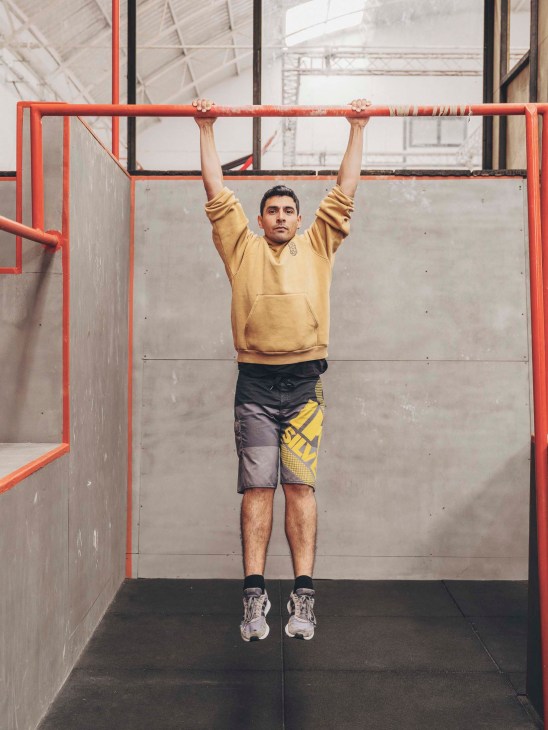
In Catalonia alone, 4,192 audio-visual projects (including video games and advertisements) were produced between 2020 and 2024. These brought in investments worth €57.9bn and 44 per cent of the projects were for companies based in the US, UK and France. “When a market leader [such as In Extremis] establishes itself here, it also generates an ecosystem that attracts more companies from the film industry,” says Lluís Matas, the city of Sabadell’s deputy mayor for economic promotion and city projection, who also heads the local Film Commission office. “This plays to our advantage.” Matas says city hall prides itself on being “film-friendly”.
However, as digital technologies continue to improve, there’s growing concern about the future of special effects and stunt performance. The impact of generative artificial intelligence was a central theme of the Sag-Aftra union’s 2023 strike against TV and film studios in Los Angeles. This summer, Netflix announced that it had used generative AI in one of its shows for the first time. A study by the International Confederation of Societies of Authors and Composers, which has member societies in 111 countries, has predicted that AI-generated audio-visual output will be worth €48bn by 2028 – an annual growth of 85 per cent since 2023 (though the bulk of this output will be seen on social-media platforms and TV broadcasts, rather than in film).
David Honrubia, In Extremis’s director of studies, acknowledges that technology is advancing at a “dizzying” rate. The academy is developing new courses to keep up with this, such as those involving shooting action with drones and motion-capture for game animation. But Honrubia is keen to distinguish between CGI as a digital tool that complements physical stunts and fully AI-generated content. Computer graphics are often used to heighten an action sequence but audiences still hanker for something that is human. “There’s nothing more real than what is truly real,” he says. As In Extremis shows, there’s a thrill in watching people putting themselves in danger in the service of cinema. That’s how to get audiences to hold their breath.
inextremisfilm.com; escac.com
In Extremis Film Services in numbers
€4m annual revenue
30 film and TV projects per year
80 ads worked on annually
70 employees
100 students per year
65 stunt doubles represented by the agency
320 club members
15 metres highest free-fall height for students
2,250 cubic metres water tank capacity


